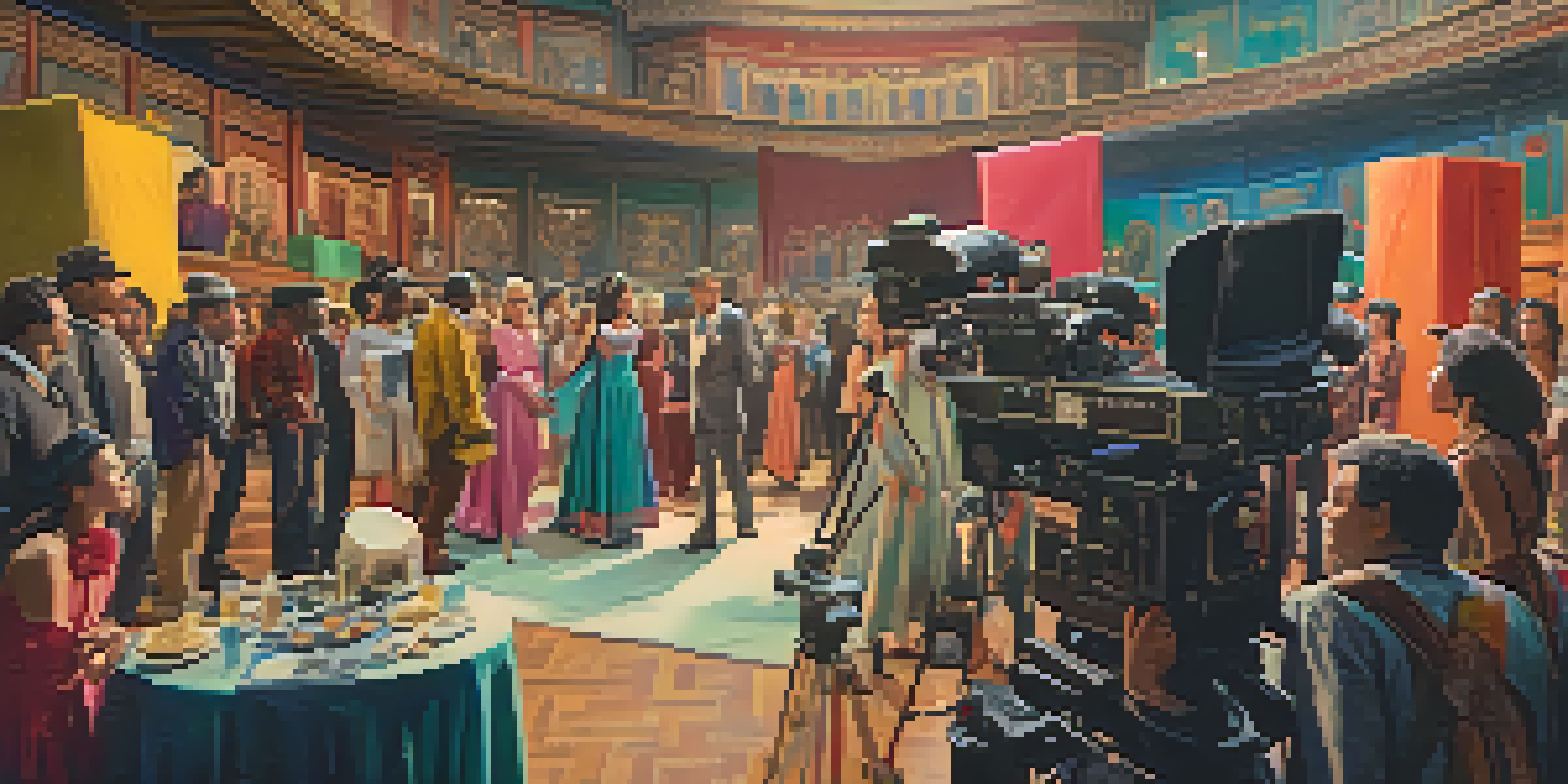The Role of Screen Actors Guild in Shaping Industry Standards

Introduction to the Screen Actors Guild (SAG)
The Screen Actors Guild, commonly known as SAG, is a prominent union representing film and television actors in the United States. Founded in 1933, its primary mission is to negotiate better working conditions, fair pay, and protection for its members. The union's influence extends beyond individual contracts, shaping the very standards of the entertainment industry.
The union's job is to protect the rights of the actors, and that means advocating for fair wages and safe working conditions.
SAG's history is rich with milestones that reflect the evolving nature of the film and television landscape. From advocating for actors' rights to addressing issues of diversity and inclusion, SAG has consistently worked to ensure that its members are treated fairly. This dedication is not just about actors but also about setting a precedent for industry standards as a whole.
In understanding SAG's role, it's essential to recognize how unions function in creative industries. They serve as a collective voice for artists, ensuring that everyone has a seat at the table when it comes to negotiations and policy-making.
Negotiating Fair Contracts for Actors
One of SAG's primary functions is negotiating collective bargaining agreements that establish baseline working conditions for actors. These contracts cover everything from pay rates to hours worked and safety regulations on set. By negotiating on behalf of thousands of members, SAG ensures that actors receive fair treatment and compensation for their work.

For example, during negotiations for new contracts, SAG often pushes for increased wages and benefits for its members, reflecting the rising costs of living and the demands of the industry. This not only protects current actors but also paves the way for future talent entering the field. The union's efforts help to create a more equitable environment within Hollywood.
SAG Negotiates Fair Actor Contracts
SAG's primary role is to negotiate collective bargaining agreements that ensure fair pay and working conditions for actors.
These negotiations aren't just about financial compensation; they also encompass working conditions. SAG addresses issues like health and safety standards, which are vital for ensuring that actors can perform their roles without unnecessary risks.
Advocating for Diversity and Inclusion
SAG plays a crucial role in advocating for diversity and inclusion within the film and television industry. The union recognizes that representation matters, not only for actors of various backgrounds but also for audiences who consume this content. By promoting inclusivity, SAG works to create a richer and more representative media landscape.
Diversity is not a reason for doing something, it is the reason for doing everything.
Initiatives like the SAG-AFTRA Diversity Advisory Committee aim to address the disparities faced by underrepresented groups in the industry. This committee develops strategies to ensure that casting decisions and hiring practices reflect the diversity of the American population. Such efforts help to break down barriers that have historically limited opportunities for many talented performers.
Through workshops, training programs, and partnerships with organizations focused on diversity, SAG empowers its members to advocate for themselves and each other. This proactive approach is essential for fostering an industry that values and respects all voices.
Setting Health and Safety Standards
Health and safety are paramount in any workplace, and the entertainment industry is no exception. SAG has been at the forefront of establishing safety protocols that protect actors during filming. These standards cover everything from physical safety on set to mental health support for performers.
In recent years, particularly with the rise of the COVID-19 pandemic, SAG has implemented enhanced safety measures to protect its members. This includes regular testing, social distancing guidelines, and protocols for on-set interactions. These measures not only safeguard actors but also contribute to broader industry standards.
Advocating for Diversity in Media
SAG actively promotes diversity and inclusion in the film and television industry, fostering a more representative media landscape.
By prioritizing health and safety, SAG demonstrates its commitment to the well-being of its members. This not only enhances the working environment but also ensures that productions can continue without compromising the health of those involved.
Impact on Working Conditions for All Actors
The influence of SAG extends beyond its members, affecting working conditions for all actors in the industry. When SAG negotiates better terms, it often sets a precedent that other organizations and independent productions strive to follow. This ripple effect helps elevate industry standards across the board.
For instance, when SAG successfully negotiates for better pay or benefits, it encourages non-union productions to consider similar arrangements to attract top talent. This ultimately leads to a more competitive and fair marketplace for actors, regardless of their union affiliation.
Furthermore, SAG's commitment to ethical practices can inspire other sectors of the industry to adopt similar standards. By advocating for fair treatment and equitable conditions, SAG helps raise the bar for everyone involved in the creative process.
Supporting Members in Times of Crisis
In times of crisis, such as economic downturns or global pandemics, SAG has proven to be a vital resource for its members. The union offers various support programs, including financial assistance and mental health resources, ensuring that actors have help when they need it most. This safety net is crucial in an industry known for its unpredictability.
For example, during the COVID-19 pandemic, SAG launched initiatives to support actors who faced job losses due to halted productions. These programs provided financial assistance and resources to help members navigate the challenges of an uncertain job market. This proactive approach highlights the union's dedication to its members' welfare.
Supporting Actors in Crisis
During challenging times, SAG provides vital resources and assistance to its members, reinforcing a strong community support system.
By providing these resources, SAG reinforces the importance of community within the industry. Actors know they have a support system backing them, fostering a sense of solidarity and resilience among performers.
The Future of SAG and Industry Standards
As the entertainment industry continues to evolve, so too does the role of the Screen Actors Guild in shaping its future. With the rise of streaming platforms and changes in audience consumption habits, SAG must adapt its strategies to address new challenges. This includes negotiating contracts that reflect the realities of digital distribution and the gig economy.
Moreover, SAG's commitment to diversity and inclusion will remain a central focus as the industry grapples with ongoing social justice movements. The union's proactive stance will be vital in ensuring that all voices are heard and represented in future productions. This commitment to progress will help create a more equitable industry for generations to come.

Ultimately, the future of SAG is not just about protecting its members but about influencing positive change across the entire entertainment landscape. Through its advocacy efforts, SAG will continue to shape the standards that define what it means to work in film and television.